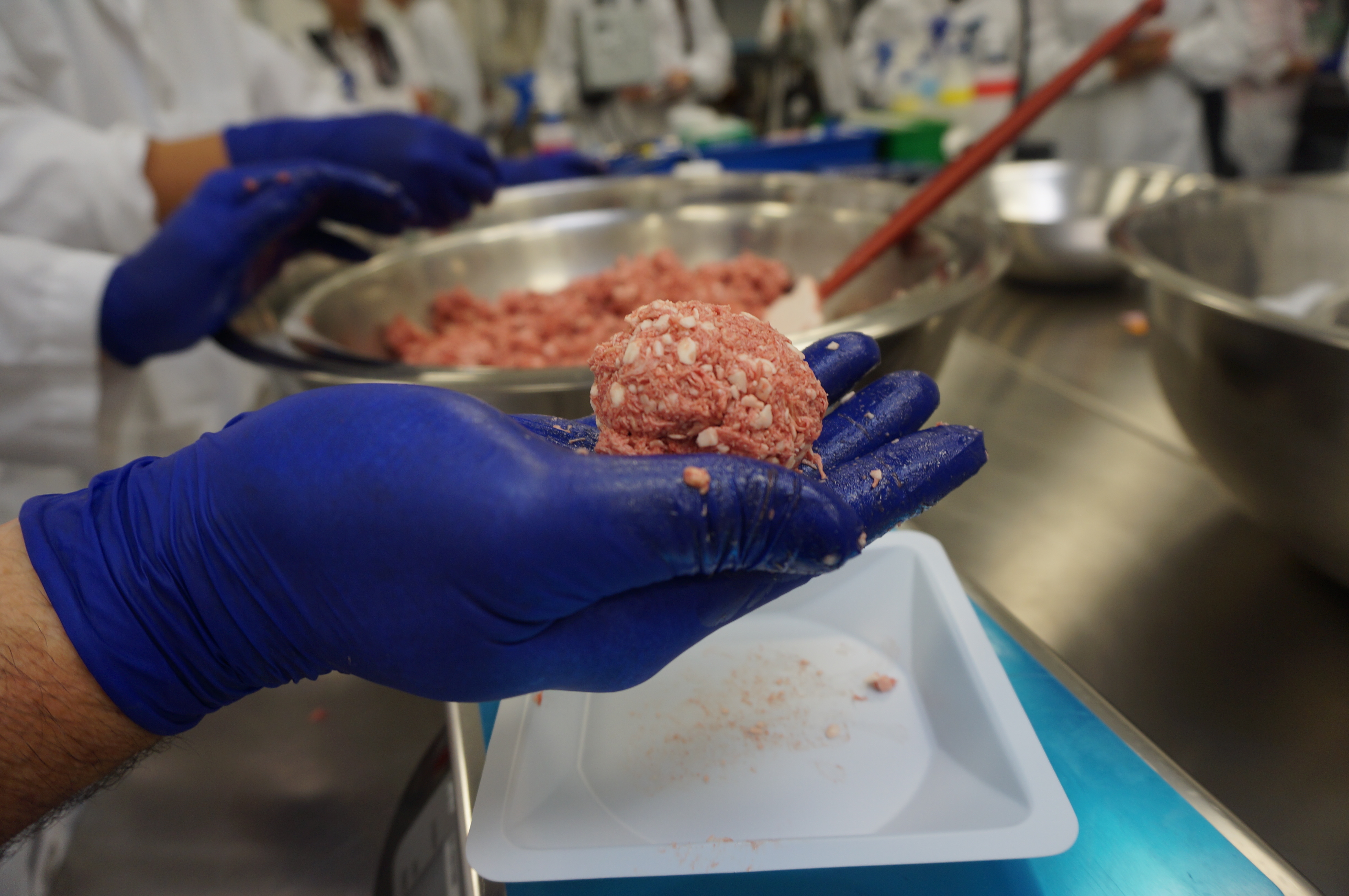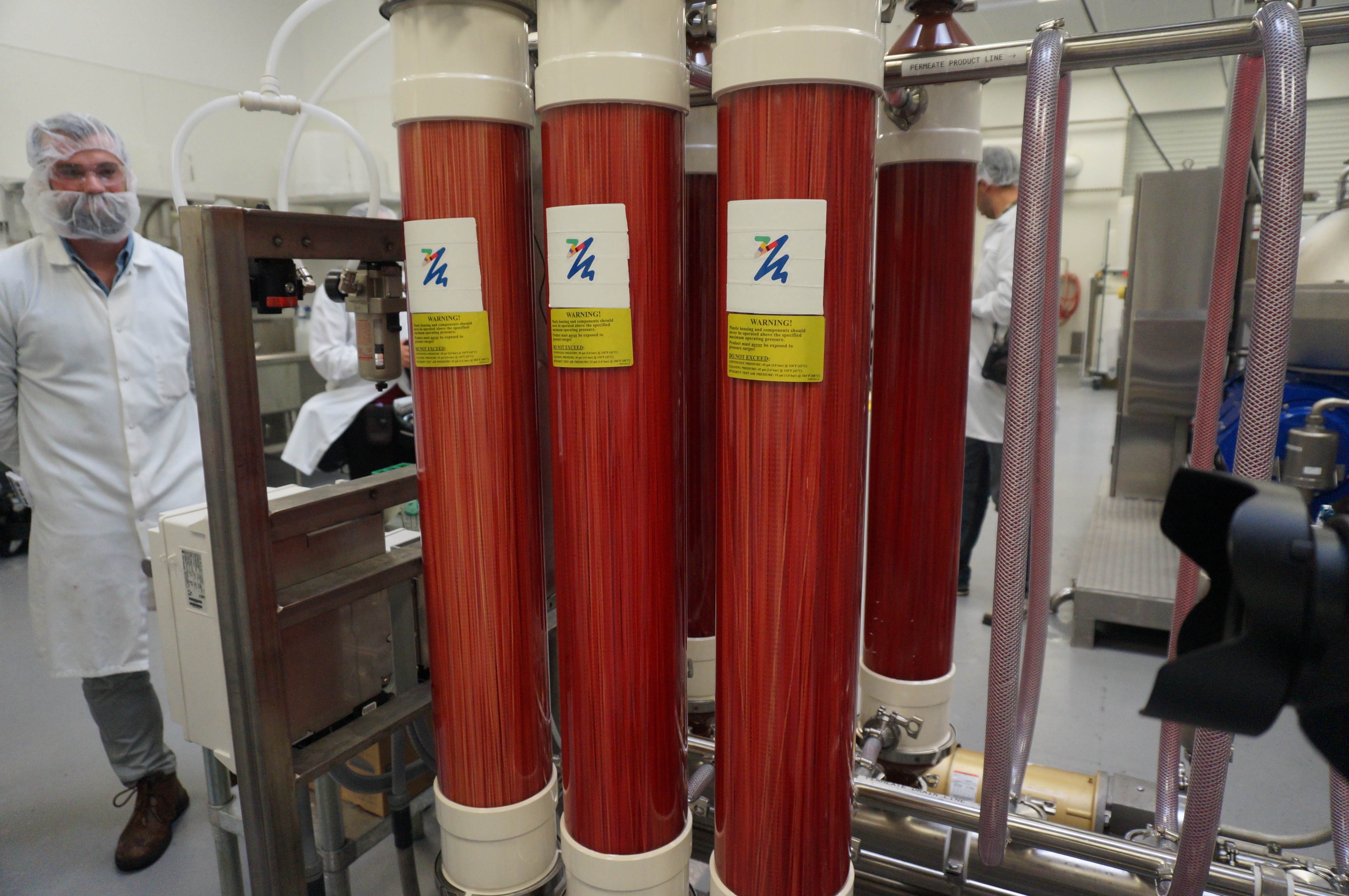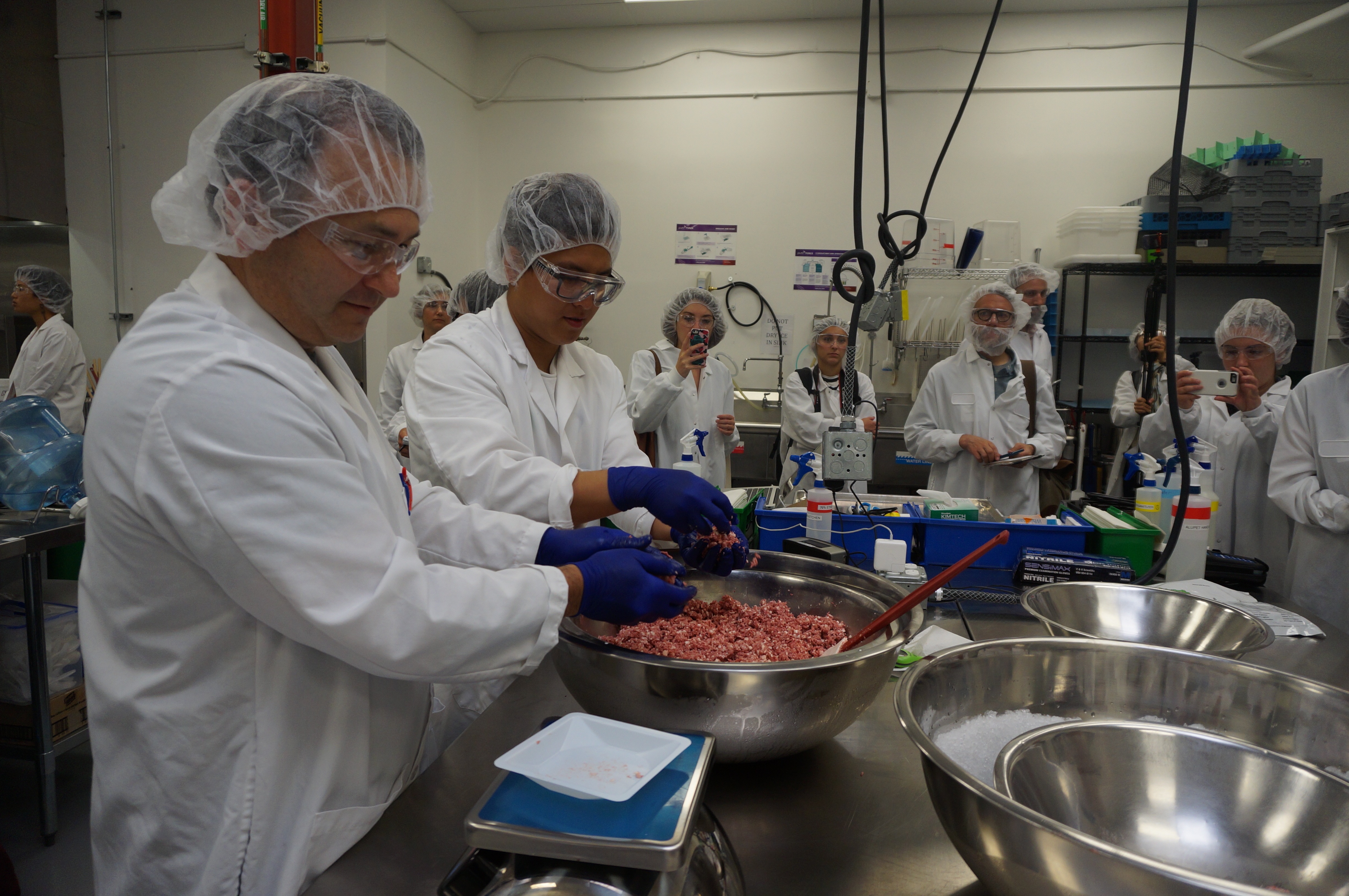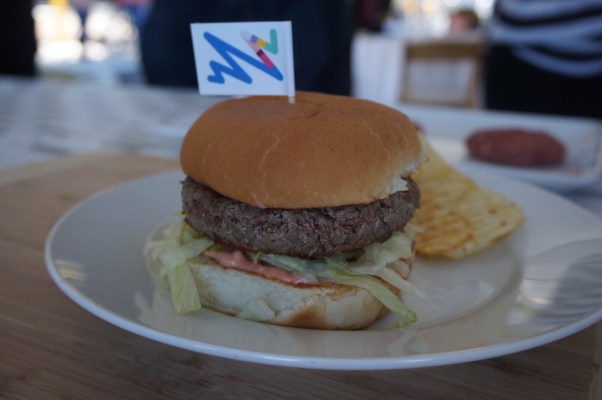Impossible Foods makes its West Coast debut today, starting with Jardiniere and Cockscomb in San Francisco and Crossroads Kitchen in Los Angeles.
The startup, which has a whopping $182 million in venture capital so far for its plant-based burger that aims to look, taste and bleed like real beef announced it is now available in California.
The announcement was made to a room full of press at Tank18 in downtown San Francisco. But the company made its official East Coast debut earlier this summer at chef David Chang’s Momofuku Nishi in New York City.
And there’s been a continued amount of hype around this burger so far among foodies. In addition, the four-year-old Redwood City company scored $108 million in funding at the beginning of October.
But what might be thought of as an unseemly amount for what appears on the surface to be another fake meat product has been through years of vigorous research and an endless amount of testing and trying in a Silicon Valley lab. The goal? To make a meaty substitute that, if you didn’t know it, might think is the real thing.
“We wanted to look at what is meat and look at in a way that no one has looked at it before and break it down into all the molecular components that make up meat and try to understand what makes meat meat,” Impossible Foods principle scientist Rachel Fraser explained.

A demonstration of how the meat is made in Impossible Foods Redwood City, California lab.
The ground beef product is supposed to be, calorie for calorie the same as a hamburger. It’s also vegan, provides all your essential amino acids and B vitamins, plus adds about six grams more protein.
The company opened up about how it makes the, er, sausage, on a recent press tour I went on at its lab in Redwood City. It won’t surprise you to find the burger is made up of the usual stuff regularly used to make vegan meat products – wheat protein, soy, some water and salt. But the real beauty here is the addition of something called heme.
Heme is found abundantly in animal muscle tissue. It’s part of the process that brings oxygen to our blood and what makes it turn red. It also gives meat that tangy, bloody, vinegar taste. And, weirdly, it can also be found in the roots of soybeans.

A filtration system used to further refine the heme. This is the same type of filtration you might see at a winery to bring out the full flavor of the grapes.
Impossible Foods makes gobs of the stuff and then adds it to its ground beef to give it that beef-like flavor and really make it sizzle on the grill.
Founder Pat Brown also says the Impossible burger uses three-quarters less water to make than a cow burger and he points out not only are we saving on precious water resources but using a plant-based burger also saves on greenhouse gas emissions and the vast amount of land used to raise and feed cattle.
All that sounds nice, but the true question is if it tastes enough like the real thing to get folks to make the switch.
I got to try the burger both while on the tour and today and, honestly, if I didn’t know it wasn’t real, I don’t think I’d even notice a difference. But I did know — and though it was very close while hot off the cooking station — my mouth knew this was something not quite the same.

Lab workers at Impossible Foods test the plant-based burger during a press tour.
The company tells me it isn’t stopping with the beef. It has bigger ambitions with other meats and dairy products as well. While it didn’t want to say which product it might start into next, Impossible Foods did tell TechCrunch that was an ongoing discussion among the team.
And it plans to make its meat available beyond fine dining restaurants in hip cities. Brown mentioned at the press conference today he hopes to place Impossible Foods products in grocery stores and other food markets globally in the future.
After all, people love meat and, despite the fact that a lot of the animal industrial complex is often cruel and bad for the planet, for the most part, we’re not stopping ourselves from eating it anytime soon.
